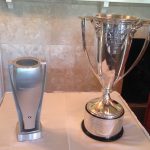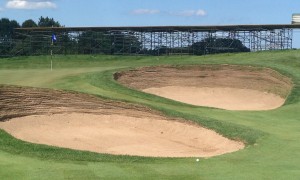 From the beginning the building of Harbor Shores was a feel-good thing. Creating a beautiful, upscale golf destination could only be an enhancement for an economically depressed area in southwestern Michigan.
From the beginning the building of Harbor Shores was a feel-good thing. Creating a beautiful, upscale golf destination could only be an enhancement for an economically depressed area in southwestern Michigan.
Well, the building of the Jack Nicklaus-designed Harbor Shores course wasn’t all that long ago – it opened in 2010 – but the changes throughout the Benton Harbor area have been extensive. A quick trip there proved that in a hurry. What a comeback this community has made, largely because it added a stunning golf course!
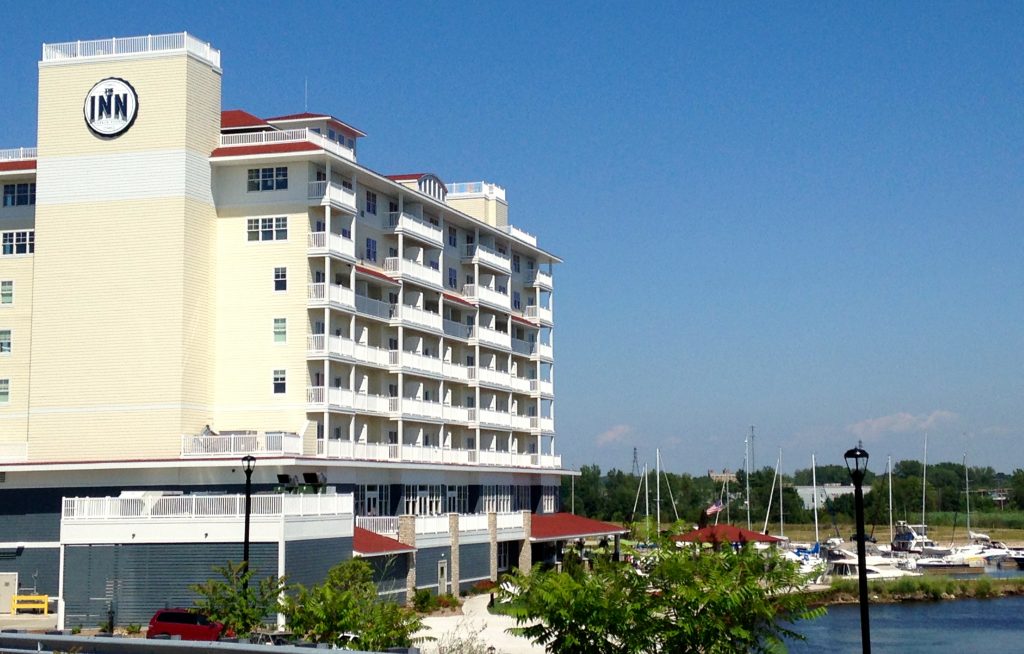
Once the course was opened it never dropped out of the spotlight. Whirlpool Corp. got the ball rolling and kept it going. Barely two years after its opening Harbor Shores hosted the Senior PGA Championship presented by Kitchenaid – one of the major tournaments on the Champions Tour. That tournament returned in 2014 and will also be back in 2016 and 2018.
That’s all well and good, but this isn’t designed as a golf course update. It’s more than that. After all, a big golf tournament only takes one week. and exciting things have been going on both in and around Harbor Shores ever since the course opened. For those who haven’t been to the Benton Harbor area for a few years, you might not recognize the place when you return. The whole community has been working together in the revival effort.
Most eye-catching is The Inn at Harbor Shores. It opened just in time for the 2014 Senior PGA Championship, providing the resort with an appropriate upscale lodging option for visiting golfers. It’s a leisure and business 90-room hotel billed as Lake Michigan’s first golf and waterfront destination. Condos are also under construction on the seventh and eighth floors, but the rooftop bar is already a popular social hangout.

The Inn has a marina, spa, fitness center, conference/banquet facilities and indoor-outdoor swimming pools. It offers scenic views of both the golf course and the water and fine dining at Plank’s Tavern. Strong consideration is being given to make it more of a year-around destination by adding cross country ski trails. The golf course has spots that would be perfect for that once the snow falls.
Harbor Village, a 530-acre lifestyle community located on the St. Joseph and Paw Paw rivers in the bordering community of St. Joseph, is also well underway. Kerry Wright, director of sales and marketing for the Village, reports that 12 homes have been built and are now occupied just since the last Senior PGA Championship and eight more lots have been sold. Out-of-towners, especially those from Chicago, have discovered what Harbor Village is all about.
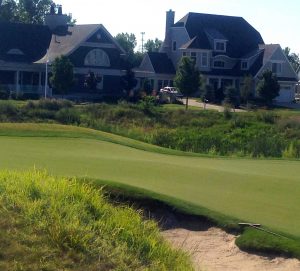
Residents have easy access to 12 miles of walking/biking trails that are also open to the public. Some of the trails intermingle with the cart paths on the golf course. Others go through Jean Klock Park and touch the waters of Lake Michigan, the St. Joseph River and the Paw Paw River. A new fitness center has also opened nearby.
Nowhere, though, are the upgrades as eye-catching as in the city of Benton Harbor. There’s still work to be done, but long-closed buildings aren’t nearly as prevalent as they were before the course opened and new businesses are evident. Attractive murals don the walls of some of them and an arts district is sprouting up quickly.
New restaurants are also in the mix, most notably Bread + Bar, and an interesting, very new coffee stop – Clifford’s Coffee Canal, which was a few days from its grand opening but still welcoming curious visitors – intrigued us with its décor, cozy atmosphere and waterfront views. The Livery and The Ideal Place are good Benton Harbor nightspots.
As for the course, it remains its challenging, testy, memorable self. And its conditioning is top-notch. The First Tee program is also thriving there. Some of the steep greens were softened since the last Senior PGA but, thankfully, not the controversial one at the No. 10 hole. It remains – at least arguably – the most memorable part of the course.
There’s a lot of competition among many great golf destinations in Michigan, and Harbor Shores is right in the thick of it.
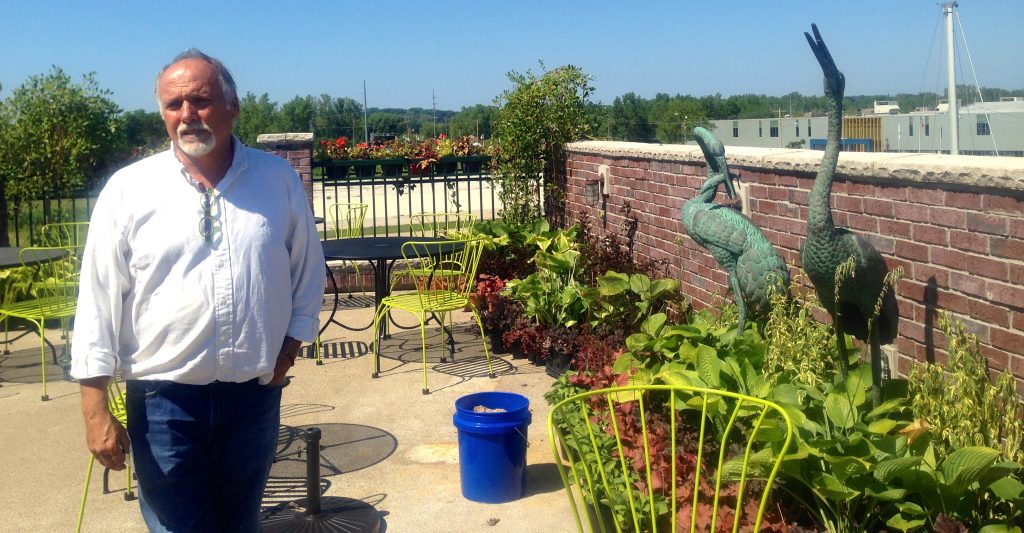
AS ALWAYS, golf travel destinations are hopping places. Here’s what going on at some of the others:
FRENCH LICK – The southern Indiana resort that hosted the Senior PGA Championship this year is about to welcome the women’s version. The Legends Championship returns to French Lick’s Pete Dye Course from Aug. 28-30.
The event is the biggest on The LPGA Legends Tour, but this year’s format has changed slightly. The tournament will be 36 holes instead of 54, as was the case the previous two years. The Friday feature is now the Legends Hall of Fame Gala. The Hall takes up a room year-around in the West Baden Springs Hotel and will welcome its third induction class this year.
GREENBRIER – Owner Jim Justice continues to be a trendsetter, and his next project couldn’t be more exciting. He’s bringing together Nicklaus, Arnold Palmer, Lee Trevino and Gary Player to jointly design a mountaintop course that Justice envisions being a U.S. Open site eventually.
Groundbreaking is next month for the course, which will overlook Oakhurst Links – generally regarded as America’s first golf course with roots dating to 1884. The new course, to be called the Greenbrier Sporting Club, will also include a modest private ski facility. The planned opening for the course is the fall of 2016.
U. OF MICHIGAN – The University of Michigan in Ann Arbor is offering golf packages, particularly around home football weekends, in which unaffiliated guests can play its two courses. The Blue Course, designed by Alister MacKenzie, opened in 1931.
The “newer’’ layout, Radrick Farms, celebrates its 50th anniversary this year. It was one of architectural legend Pete Dye’s first creations. He designed it in collaboration with his wife Alice.
INNISBROOK – The Florida resort that hosts the PGA Tour’s Valspar Championship is in the process of renovating its famed Copperhead Course. The six-month project is to be completed in October. Jordan Spieth posted the first victory of his banner season (Masters, U.S. Open and John Deere Classic wins followed) at Copperhead.
The renovation involves replacing all of the fairways and rough, rebuilding each green and re-shaping the bunkers as a tribute to the late Chicago-based Larry Packard, who passed away at age 101. He spent much of his later years living at Innisbrook.
MYRTLE BEACH – This golf hotbed is getting ready for two big events that tee off in August. The Myrtle Beach Family Fun Golf Tournament is Aug. 20-23 and the massive Myrtle Beach World Amateur will run Aug. 31 to Sept. 4.
The World Amateur, in its 32nd year, will be played at over 60 area courses and will have over 3,000 entrants. They’ll cover from all 50 states and about 25 other countries. The 72-hole event will feature net and stroke play competition with players assigned to flights based on gender, age and handicap.
The Family Fun event will be hosted by Mystical Golf, which operates The Witch, Man-O-War and The Wizard courses.
THIS is the fifth of an ongoing series of columns reporting on what’s new at golf destinations.

